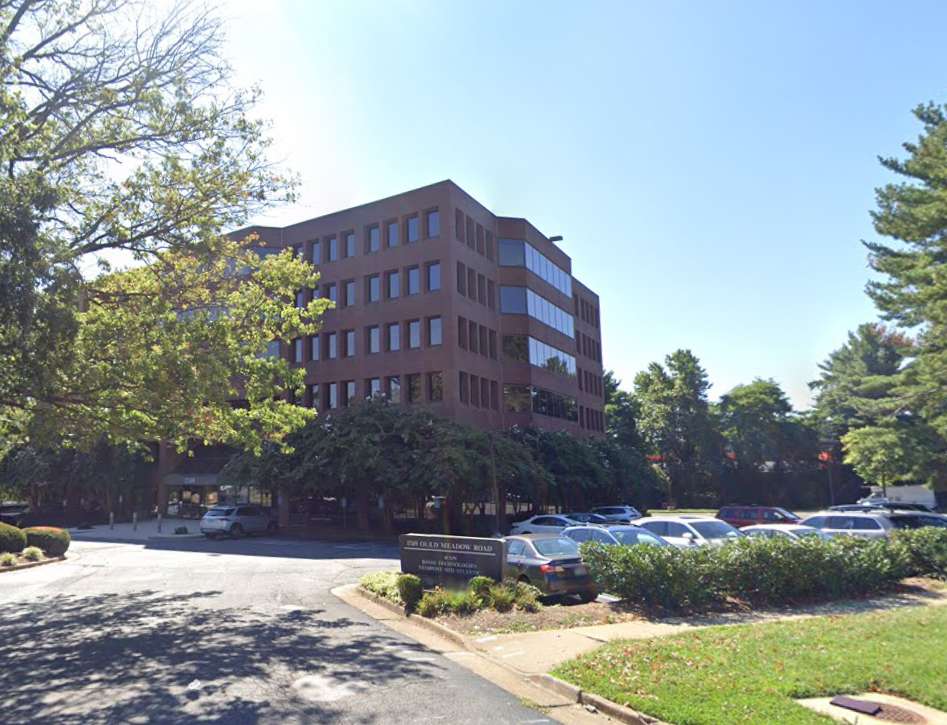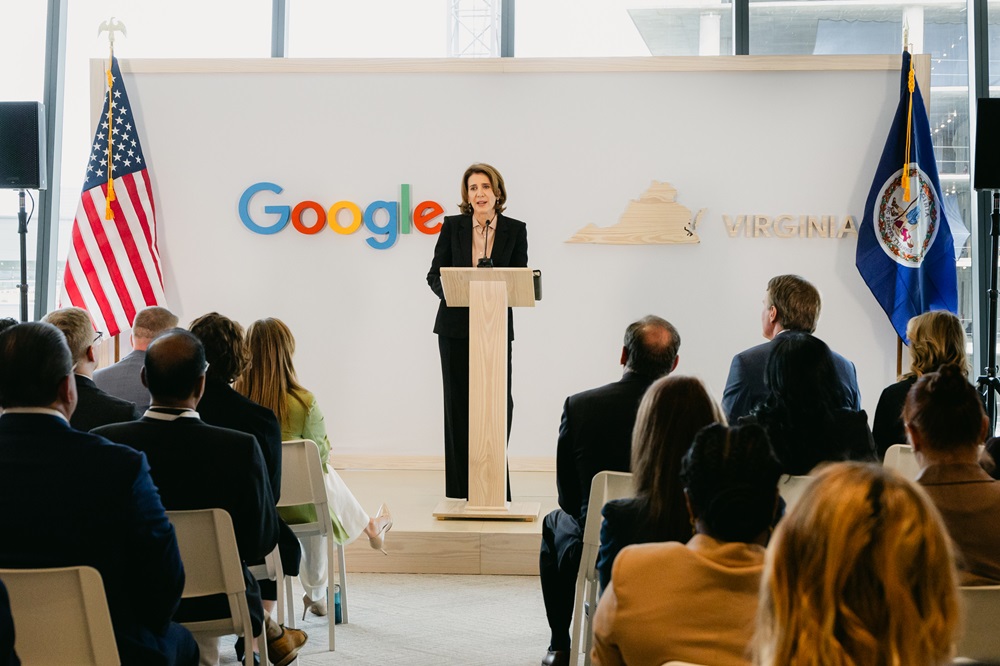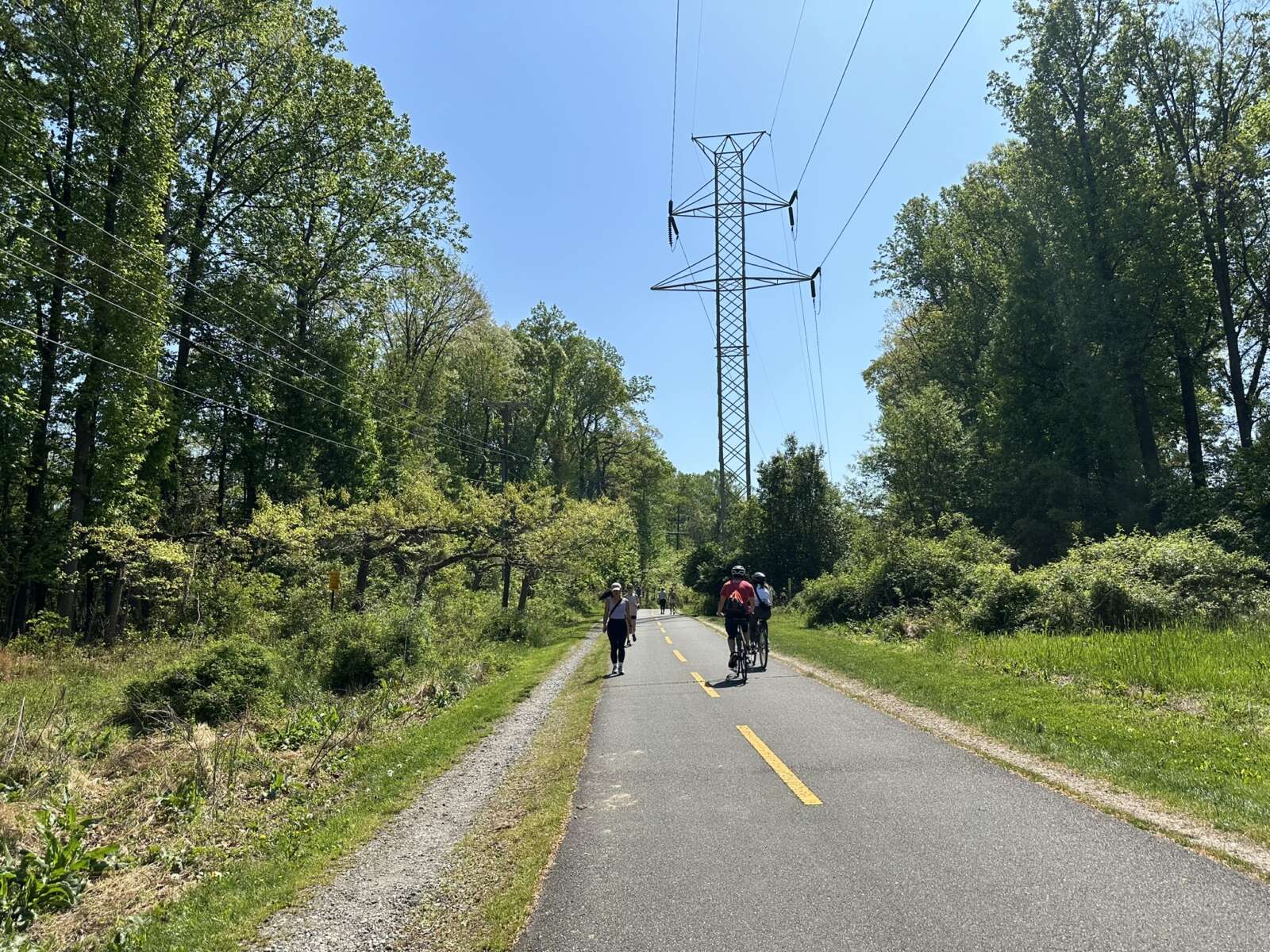Last week, Tysons Reporter examined the importance of sidewalk design as Tysons expands its pedestrian infrastructure network.
But no matter how well-designed a sidewalk might be, what matters most is that it’s in the right place.
There are three guidelines that Tysons can follow to make its pedestrian infrastructure more complete. The first is simply to find where people are already walking. The second is to connect sidewalks to public transit. The third is to provide cut-throughs in large blocks, connecting up the network.
Find the demand
An old architecture-school anecdote mentions a designer who was hired to lay out paths across a new college campus.
For the first months of the year, she left the entire campus unpaved, and students walked across the grass to their classes.
After the first snowfall, she took pictures of the quad from the bell tower, and then laid out the paths wherever she saw footprints in the snow.
In just the same way, dead grass and bootprints in Tysons reveals pedestrian activity. These are called “desire paths.”
They’re useful for transportation planners because they can prove, no speculation needed, that there really is demand for a sidewalk in a particular place. Even Tysons Plaza, connecting the mall to the Metro station, shows desire paths.
Desire paths can easily be paved over by the owner of the land, whether that is Fairfax County, the Virginia Department of Transportation, or a private interest. According to VDOT’s Project Cost Estimating System, a sidewalk costs only $25.15 per linear foot to install in Northern Virginia — it’s hard to think of a more affordable investment in transportation.
You can find desire paths all over Tysons at the ground level, especially near transit stations — which leads us to the next guideline.
Follow the transit
Public transportation and walkability have a symbiotic relationship. Unlike cars, buses and trains rarely drop passengers off right at their destination, meaning that they generally have to walk the final fraction of a mile. But in Tysons, that final stroll can be made circuitous, dangerous or uncomfortable by poor or disconnected pedestrian infrastructure.
As Jeff Speck, author of Walkable City, puts it: “while walkability benefits from good transit, good transit relies absolutely on walkability.” Since its opening in 2014, Silver Line ridership has been less than half of what was anticipated — perhaps because of Tysons’ slower-than-expected transformation into the kind of walkable area promised by ongoing development.
Pedestrian infrastructure is just as important to buses as it is to trains, particularly when a large number of bus stops in Tysons — like one pictured above — are located at neither crosswalks nor sidewalks. Crosswalks, including those in the middle of blocks, are essential to safety; according to VDOT, 51 percent of pedestrian injury crashes occurred at mid-block crossing locations and 86 percent of pedestrian fatal crashes occurred at locations without a marked crosswalk.
Mid-block crossings aren’t new to Fairfax, and they’re approved by VDOT and encouraged by the National Association of City Transportation Officials.
Connect the network
There are two main things that can get in the way of someone walking in Tysons, and they both tend to be larger here than in America’s older cities: streets and buildings.
The single block containing Tysons Corner Center measures almost half a mile, equivalent to about half a dozen blocks of downtown D.C. To walk around Tysons’ ‘superblocks’ is a long journey, but if paths are carved through them, these paths multiply the number of five- or ten-minute trips available to pedestrians.
Similarly, bridges and crosswalks also function as multipliers by connecting sidewalk networks. When a pedestrian bridge connected the Towers Crescent office building to Tysons Corner Center, it not only meant that 3,000 employees could walk to a variety of food options for their lunch hour, taking their cars off the road, it connected them to an expanding network of comfortable pedestrian infrastructure reaching beyond the Metro station.
A successful project
When sidewalks opened last month along Leesburg Pike under the Chain Bridge Road overpass, the project was successful because it observed all three of these guidelines.
First, there was demand. As one reader, Ryan, observed in the comments section, “Commuters were walking in the street for a few years, before we had this new sidewalk.”
Second, it was near transit, adjacent to the Greensboro Metro station.
Third, it provided a link between two previously-disconnected sidewalks, meaning that it didn’t only add pedestrian potential but multiplied it.





